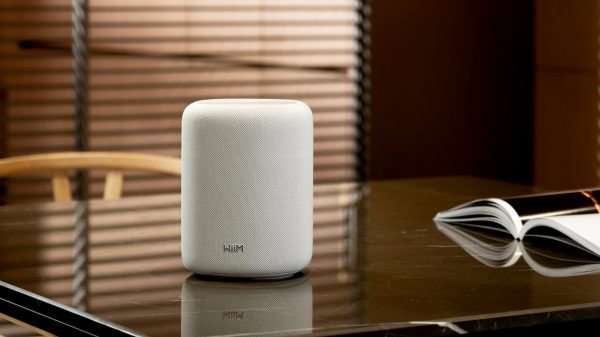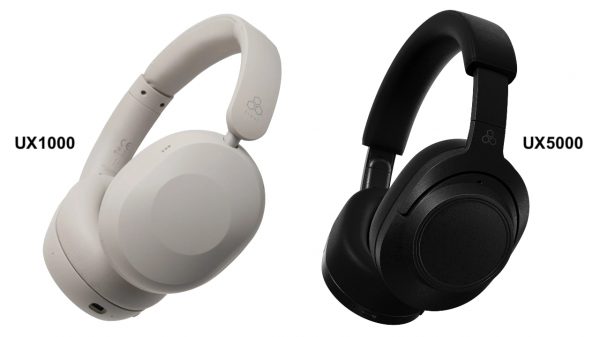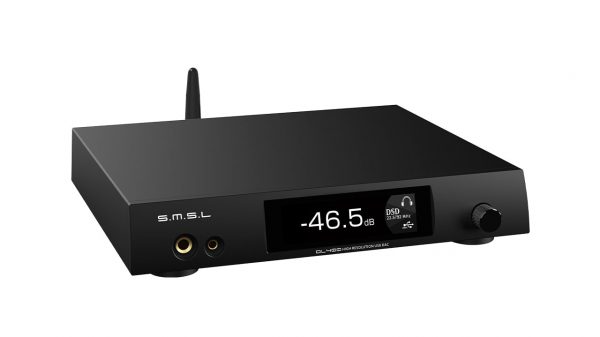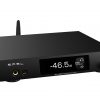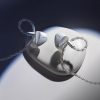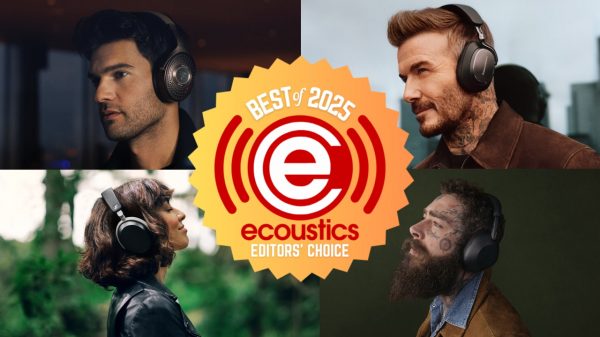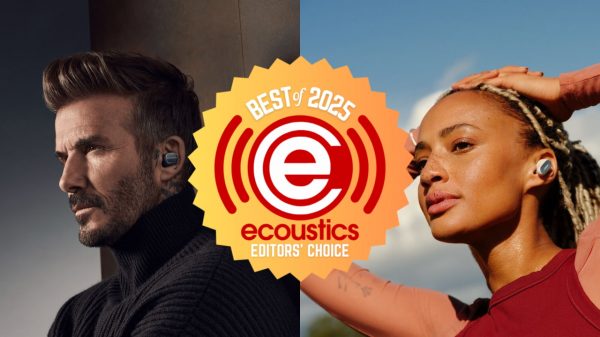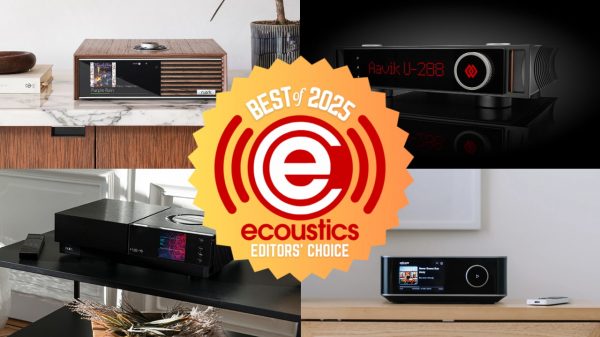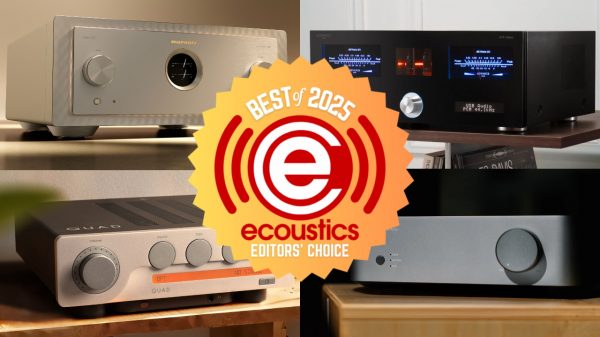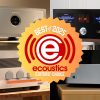In This Article
- What is CEDIA Expo?
- Best Wireless Speaker: TCL Z100 with Dolby Atmos FlexConnect
- Best Stereo Sound (Cost No Object): Bowers & Wilkins Nautilus Speakers/Marantz Amplifiers
- Best Speaker Bang for Your Buck: Theory Audio Design ic5 Speakers
- Best Streaming Soundbar: Bluesound Pulse Cinema
- Best Soundbar: Steinway Lyngdorf Model S
- Best Subwoofer: ASCENDO THE64 SUB 64-inch Infrasonic Subwoofer
- Best Budget Outdoor Landscape Speakers: Klipsch Courtyard
- Best Outdoor Speakers (Overall): Theory Audio ic6 Bollard Speakers
- Best Invisible Speakers: Alchimia Ceramic Sound
- Best Home Theater Speakers (Cost No Object): ASCENDO HALO
- Best Audio Streamer: Bluesound PowerNode N331
- Best Amplifier: SPEAKERPOWER 8-Channel HTRx8-400
- Best Audio Processing Tech: DIRAC Live ART (Active Room Treatment)
- The Bottom Line
What is CEDIA Expo?
CEDIA Expo is the annual trade show for CEDIA (Custom Electronic Design and Installation Association), a trade association for the smart home/custom installation industry. Custom installers and systems integrators are the folks who build home theaters, whole home media systems and smart home automation and security systems for those who can afford such things.
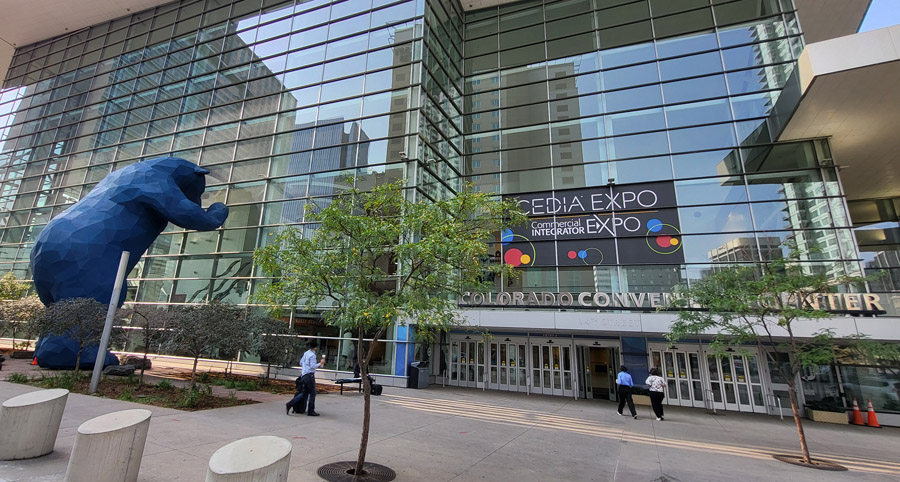
At CEDIA expo, manufacturers of audio, video and home theater gear show off their latest products to dealers, partners and media (like ourselves). Every year, we check out the exhibits, awarding our favorite gear and systems with the eCoustics “Best in Show” awards. Below are our picks for best speakers, processors, soundbars and more audio gear from CEDIA Expo 2025.
Note: This article covers audio gear only (speakers, subwoofers, amplifiers, processors, soundbars, etc.). Check out our other “Best in Show” awards here:
Best Wireless Speaker: TCL Z100 with Dolby Atmos FlexConnect
Coming out of a $1.3 million home theater demo, one might think it would be hard to get excited about a little wireless speaker that sells for under $400. But TCL’s Z100 speaker ($399 MSRP) and companion Z100-SW subwoofer are the first to support Dolby’s new Dolby Atmos FlexConnect technology, and that makes it pretty cool.
Dolby Atmos FlexConnect allows you to easily add wireless speakers to your TV and get room-filling Dolby Atmos surround sound, even if you don’t have the best room layout or speaker placement. The tech identifies your speaker layout and creates “phantom channels” to fool your brain into thinking sound is coming from places where no speaker is actually located. Whether you have just one or up to four Z100 speakers, Dolby Atmos FlexConnect allows the TV to optimize sound for that precise speaker layout and can take advantage of the TV’s built-in speakers for even better results.
TCL calls the Z100 a “1.1.1” channel speaker, as it has forward facing drivers, an up-firing reflective driver for height information and a built-in woofer. But that middle “point 1” is a bit of a stretch as the speaker cabinet and driver are too small to offer real low frequency energy. If you want decent bass, you’ll need to add the optional wireless Z100-SW wireless subwoofer.
We heard an extended demonstration of the Z100 system on a TCL QM8K TV using three Z100 speakers, a Z100-SW subwoofer and the Bang & Olufsen speaker system built into the TV itself. Bass was solid and dialog was nicely mapped to the screen speakers while ambient sounds came from all over the room, including above and behind us. Sure enough, we heard sound coming from the back left corner of the room, where there was no speaker. So the technology did appear to be working as designed.
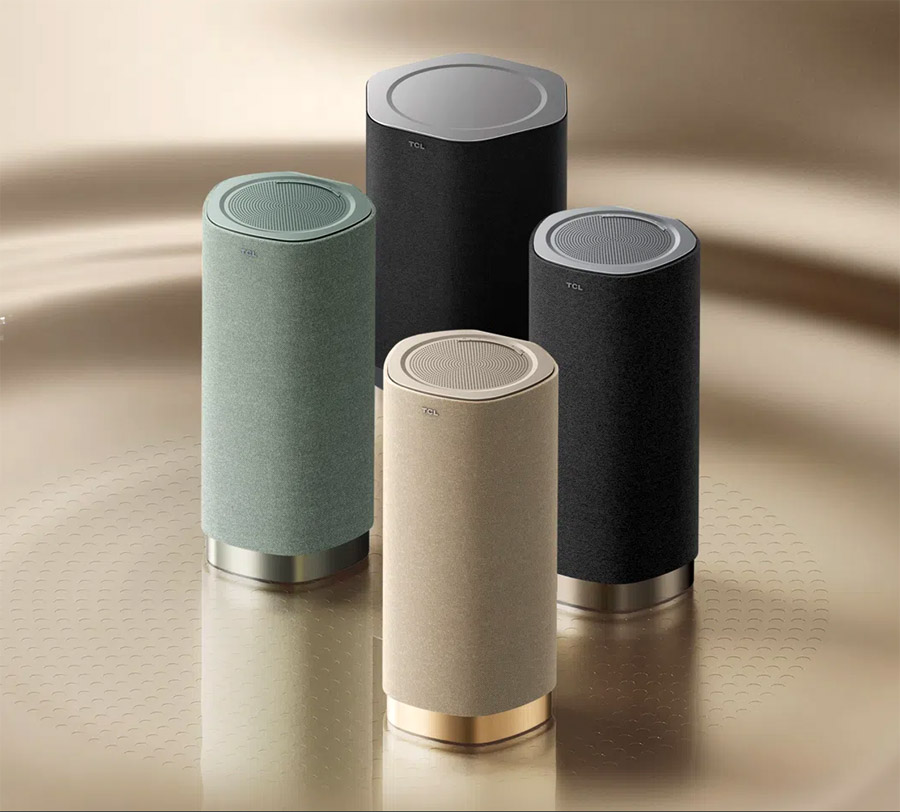
TCL’s implementation of Dolby FlexConnect on U.S. model TVs is currently limited to a total of four speakers (including the subwoofer) which means you can’t do four Z100 speakers (one in each corner of a room) plus a subwoofer. You’ll have to omit the subwoofer or use just three speakers plus the subwoofer. With a three speaker system, I’d probably put a single rear speaker centered right behind the couch, but even with the rear speaker off to one side, the system produced a convincingly immersive soundstage. TCL’s global web site does state that a 5 speaker system (4 Z100s plus 1 Z100-SW) is possible. So we’re hoping the compatible U.S. TV models may be software upgradeable to support five speakers, including the subwoofer.
Dolby Atmos FlexConnect is available for use with TCL’s QM6K, QM7K and QM8K MiniLED models released in 2025. Support for more models will follow. While you can buy a single Z100 speaker ($399 MSRP), the company is also offering bundles which include the Z100-SW powered sub. All prices listed are before any promotions or sale pricing.
TCL Z100 Speaker with Dolby Atmos FlexConnect Pricing:
- Z100 (Single Speaker): $399.99 MSRP
- Z100 Duo (Two Z100 speakers): $799.98 MSRP
- Z100 Trio+ (Two Z100 speakers plus Z100-SW subwoofer): $1,299.97
- Z100 Quartet+ (Two Z100 speakers plus Z100-SW subwoofer): $1,699.96
Read More: Dolby Flexes its Immersive Audio Might with Dolby FlexConnect, Now in TCL TVs.
Best Stereo Sound (Cost No Object): Bowers & Wilkins Nautilus Speakers/Marantz Amplifiers
As we did last year, we got to hear Bowers & Wilkins iconic Nautilus speaker system ($110,000) again at the show. But this was the first time we heard them driven by sister company Marantz amplifiers. The system was wired and power was conditioned with AudioQuest products.
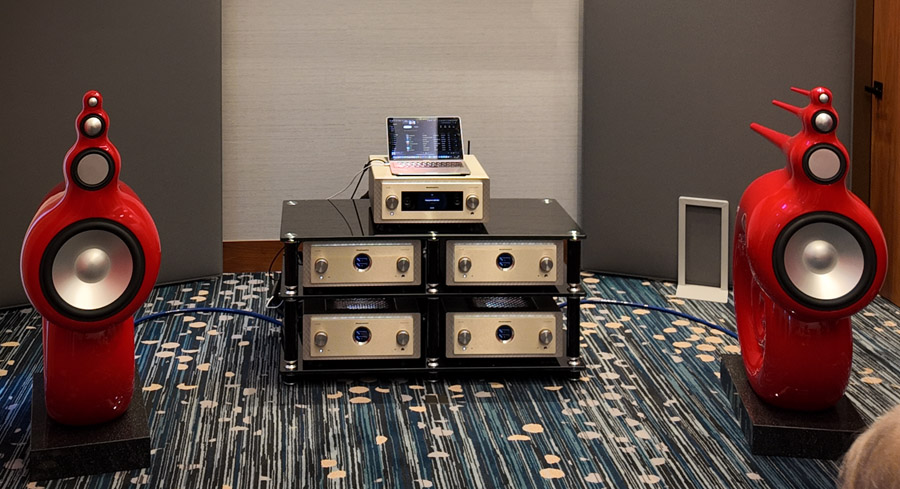
Two-channel audiophile systems are generally not as appealing to me as a finely tuned multichannel system, whether for movies or for music. But there’s something magical in the Nautilus that connects you directly with the artist you’re listening to. One of the tracks we heard was “Lost Without You” by Freya Ridings. I could just feel the woman pouring her soul out as she told her tale of abandonment and love lost.
The speakers placed her voice in three dimensional space in the center. Backing instruments were also well positioned in the room. Of course, the bass was deep and extended and midrange and treble frequencies were detailed without undue harshness, but the system goes beyond the specs and attains that elusive musicality missing from many two-channel and multi-channel audio systems.
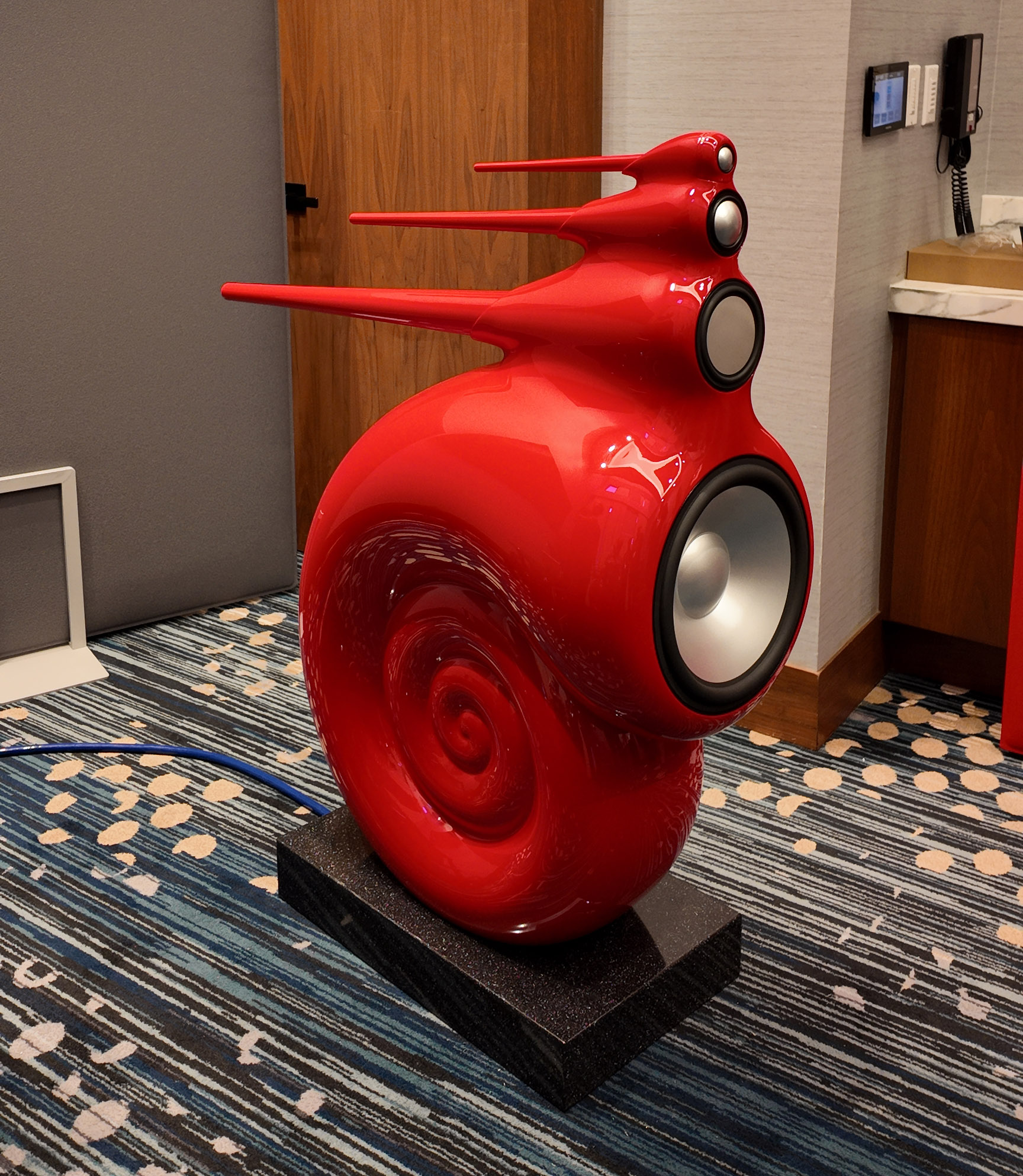
Preamplification and power was provided by a Marantz Link 10N streaming preamp ($14,000) and four Marantz Model 10 integrated amplifiers ($15,000/each) respectively for a total system cost of $184,000 (not including cables and power conditioner). The Nautilus was run in a 4-way active configuration with a dedicated Model 10 amp for each speaker driver (four stereo amps, total).
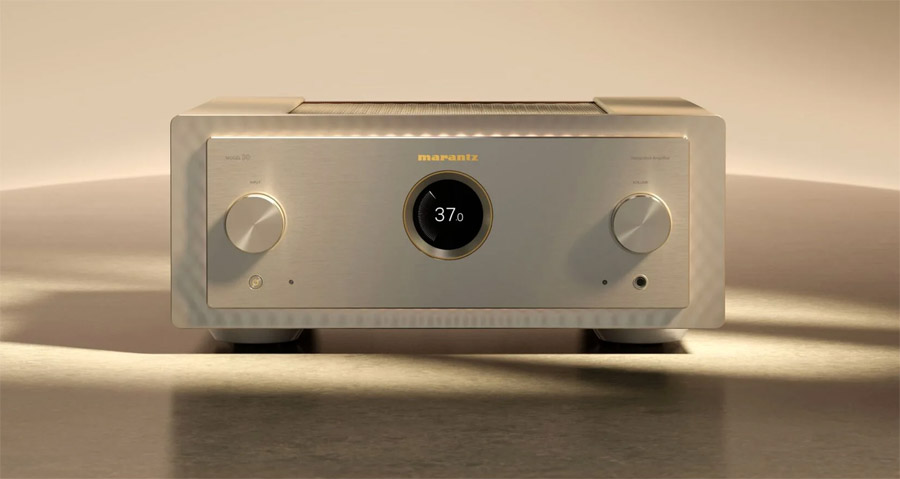
The crossover module is included in the price of the speaker as is custom installation and true “white glove” set-up. The gentleman doing the demos at CEDIA Expo is the guy who normally comes to your house to install them. Hmmm, traveling the world setting up gorgeous-looking and sounding speakers for well-heeled audiophiles? How do I get that job?
Learn more about Bowers & Wilkins Nautilus.
Best Speaker Bang for Your Buck: Theory Audio Design ic5 Speakers
Once again, L. Paul Hales (“Call me Paul”), the CEO of Theory Audio Design, stole the show with a compelling presentation and demo. The company showed off their brand new ic5 in-ceiling speaker. Thought it’s called “in-ceiling,” the ic5 is perfectly happy being installed in a wall or in a cabinet for on-wall/on-ceiling mounting. Like its big brother the ic6 (introduced last year), the ic5 creates big room-filling sound. On its own, the ic5 is able to hit about 108 dB of peak output. With its 5-inch woofer/midrange, the ic5 can fit into slightly smaller spaces than the 6.5-inch ic6. The ic5 also sells for a bit less than the ic6 ($695 vs. $885).
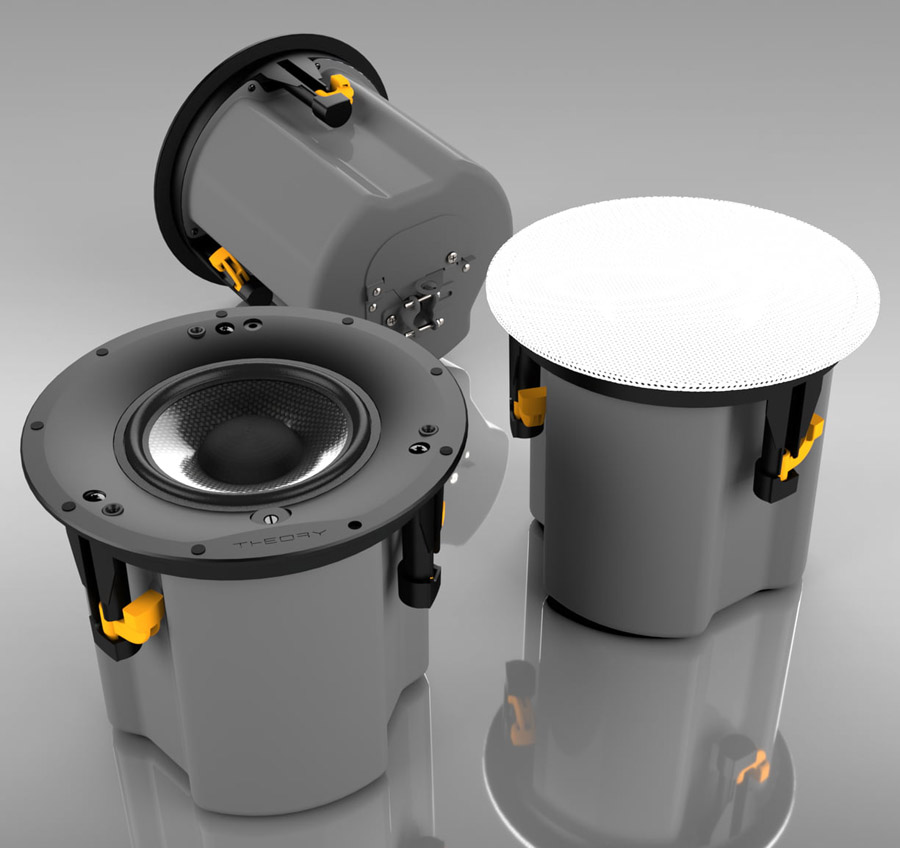
You’ll need to add one of Theory’s ALC (Active Loudspeaker Controller) units, which start at about $2,495 for a model DLC-250.4 4-channel controller/amplifier. But one of these control units can go a long way – the 4-channel 250W DLC-250.4d can actually drive up to 64 Theory speakers in “Hi Z” mode and the company’s DLC-1500.4d ($5,000) can power up to 300 Theory speakers in Hi Z mode. So the cost efficiency of the system increases with larger speaker deployments.
You can get a hint of this sound in our video, which captures Hales’ full demonstration and presentation recorded on a high-quality Shure stereo microphone:
Read more about this year’s Theory Audio Design exhibit at CEDIA Expo
Best Streaming Soundbar: Bluesound Pulse Cinema
While Bluesound’s new flagship soundbar, the Bluesound Pulse Cinema ($1,499) does not include native support for Dolby Atmos music, it does include Dolby Atmos decoding via its standard HDMI eARC port, and that’s a good start. This means you can connect the Pulse Cinema to your TV to get Dolby Atmos immersive surround sound from a compatible music streaming app (Apple Music or Amazon Music). You can also get Dolby Atmos sound from most of the top video streaming services, such as Netflix, AppleTV+, Disney+, HBO Max and Amazon Prime Video.
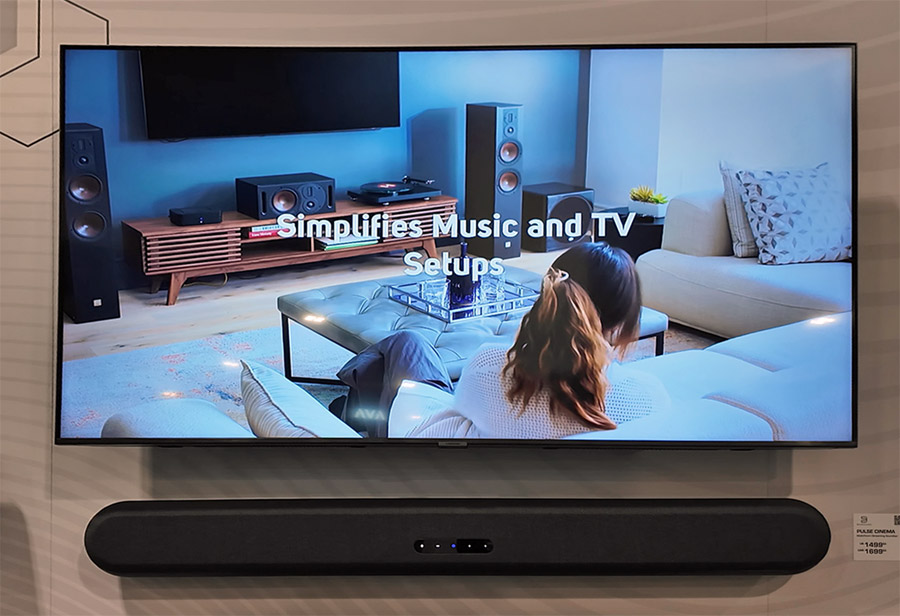
The Bluesound Pulse Cinema includes up-firing and front-firing drivers as well as support for optional rear channels and a wired or wireless subwoofer for a discrete 5.1.2-channel immersive sound set-up. Of course, the Pulse Cinema is also a Bluesound zone, so it fully integrates into an existing Bluesound whole home audio system.
We listened to the Pulse Cinema at CEDIA Expo 2025 and found that it offered punchy, dynamic sound that will be a substantial upgrade over any TV speakers. Be sure to pair it with a TV that offers HDMI eARC and Dolby Atmos passthrough in order to enjoy Dolby Atmos music.
Find Out More: Bluesound Pulse Cinema Soundbar Brings BluOS One Step Closer to Streaming Immersive Dolby Atmos Music
Best Soundbar: Steinway Lyngdorf Model S
What do you get when the most revered brand in piano manufacture partners with one of the premier Danish audio brands? You get high-end audio products that look as good as they sound. Steinway Lyngdorf normally focuses on elegantly designed high end speakers and electronics, but their dealers and customers had been asking for a simple yet refined on-wall audio solution to enhance the sound of their TVs. The result was the Steinway & Sons Model S soundbar.

Featuring three Air Motion Transformer tweeters, three dedicated midrange drivers, and two woofers, and powered by 1,600 watts of Lyngdorf amplification, the Model S soundbar offers an open airy sound, precise imaging and deep bass we normally hear on high-end tower speakers. We listened to several music and movie clips and found the sound to be captivating and dynamic. This is not your average soundbar.
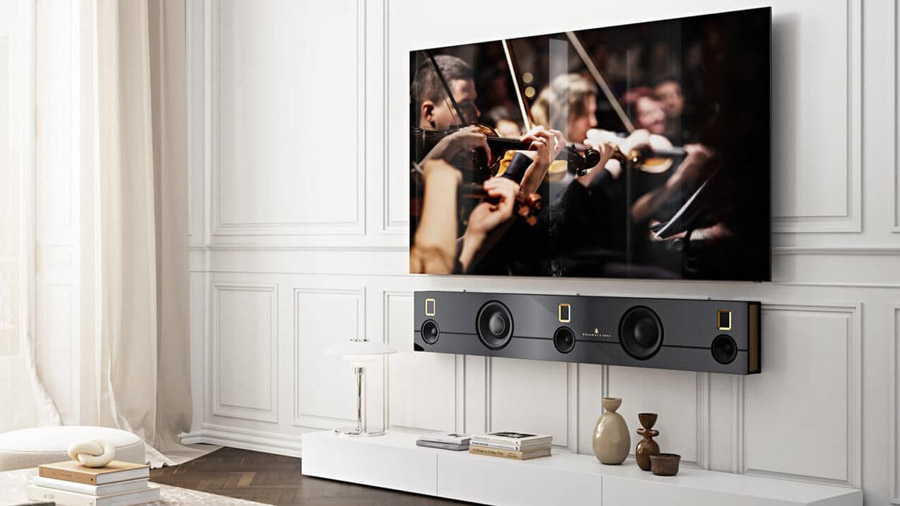
The bar itself is made from low-resonance MDF with machined solid aluminum front and back panels. The cabinet features five acoustically separated chambers inside for maximum isolation and optimized performance of each driver. It is lacquered in matte black or immaculate high gloss black with gold accents and the company’s signature strings. Many speaker companies call their finish “piano black” but only the Steinway Lyngdorf can claim “Steinway black.” Custom finishes are available by request. Every Model S soundbar is assembled and finished by hand in Skive, Denmark.

The Model S soundbar starts at $17,000, not including electronics. With Steinway Lyngdorf amplification and RoomPerfect room correction and calibration, the complete Model S package starts at $40,000.
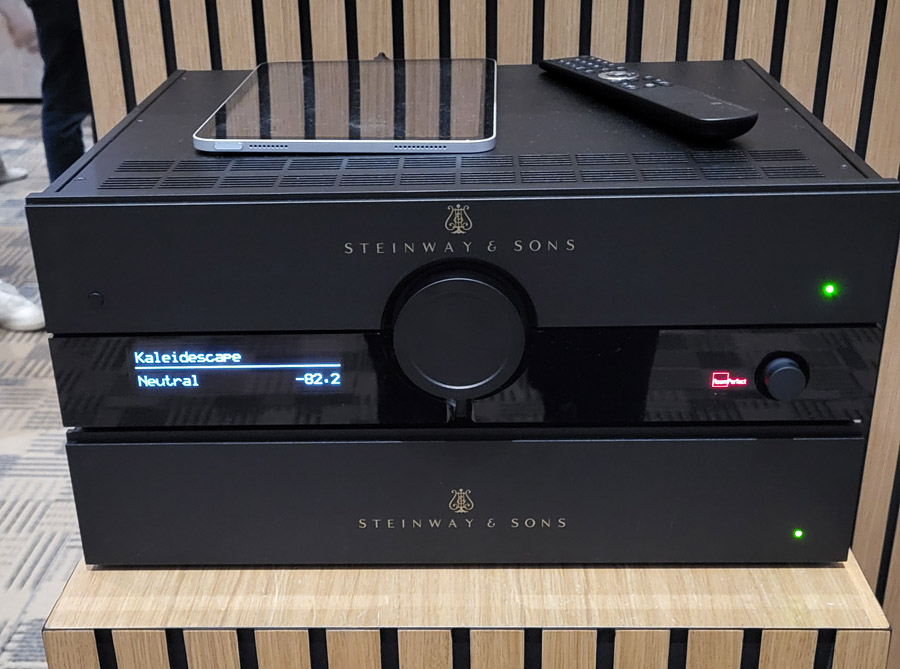
When elegant design is as important as impeccable sound, the Steinway Lyngdorf Model S has got you covered.
More Information: Steinway Lyngdorf Model S Soundbar is Like No Other
Best Subwoofer: ASCENDO THE64 SUB 64-inch Infrasonic Subwoofer
Can a subwoofer be too big? Not if you ask ASCENDO Immersive Audio. In addition to offering a wide selection of speakers and “normal” sized subwoofers, the company offers extra large subwoofers designed to handle the lowest bass frequencies – even those below the limit of human hearing. These “infrasonic” subs help to pressurize a room and provide that gut-wrenching impact that makes movies and music more visceral and powerful.
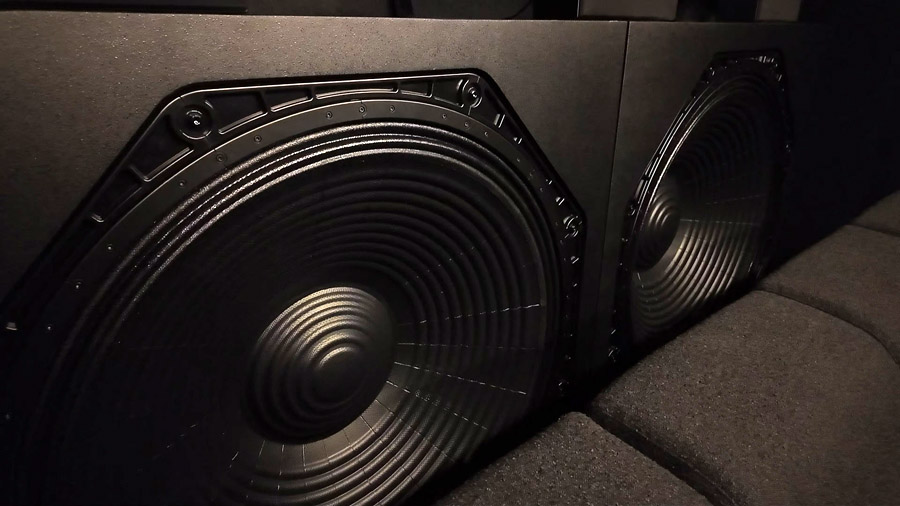
The price of each sub is around $128,000 including amplification. The funny thing? This isn’t even ASCENDO’s largest subwoofer. They also offer a “THE100” ($168,000/each) which features a… (you guessed it) 100-INCH DRIVER! So far, we’ve only seen this beast in passive displays, but we’re sure it can put out some impressively low Hertz at high SPLs.
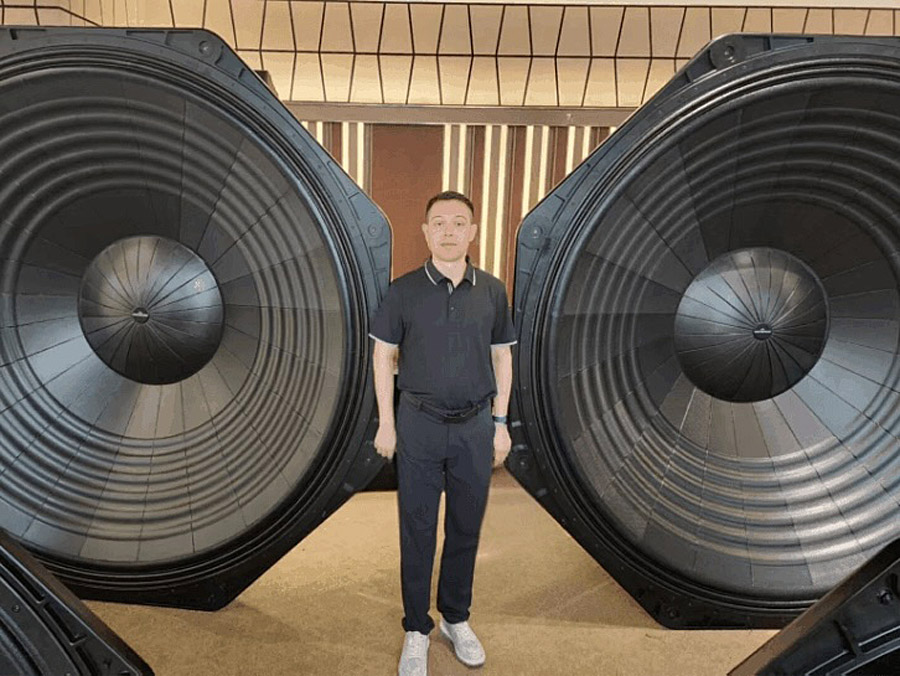
Read More: What Goes Into a $1.3 Million Home Theater System? We Find Out at CEDIA Expo 2025
Best Budget Outdoor Landscape Speakers: Klipsch Courtyard
With CEDIA Expo’s focus on the custom installation market, we always see a number of speakers designed for outdoor use. These include traditional outdoor speakers in rectangular boxes intended for use on a patio or under an eave as well as landscape speakers which go on or into the ground. This year, Klipsch unveiled a new set of landscape speakers, the Courtyard series. It includes a 2-way ground-mount satellite as well as a subwoofer which can be mounted on the ground or partially buried.
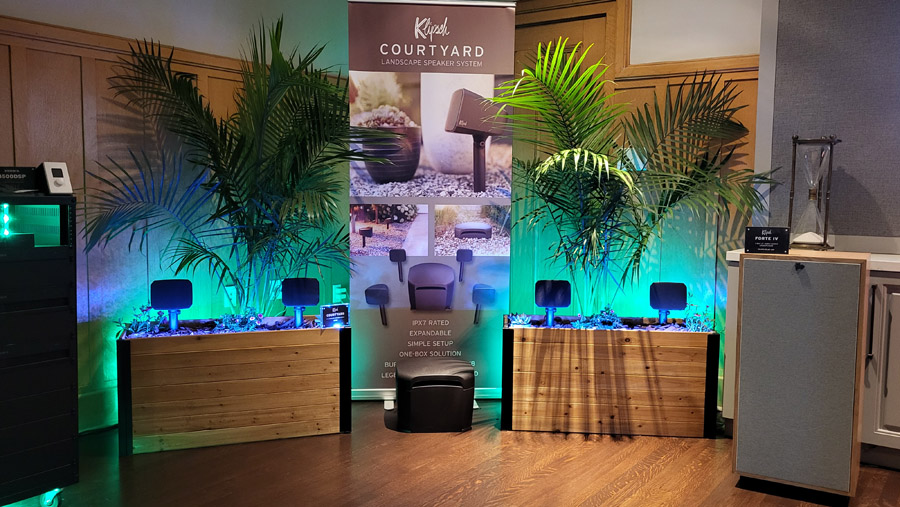
The Courtyard speakers feature Klipsch signature 1-inch Tractrix horn-loaded tweeter for high efficiency paired with a 4-inch polypropylene low frequency driver. The sub features a 10-inch polypropylene driver. Both units feature IPX7 rating which means they are not only water-resistant but can be fully immersed in up to 3 feet of water for up to 30 minutes.
Most of these outdoor speakers sound unexceptional but the Courtyard system sounded punchy and lively, with solid extended bass. Each speaker is rated to output up to 107 dB of sustained SPL which should be loud enough for casual music listening, or even movie and TV viewing. The system comes in a 5-piece bundle (4 satellite speakers and one subwoofer) for $1,799. Additional 2-channel “expansion packs” are also available for $599.
Find out more: Klipsch Courtyard – Making Backyards Concert-Worthy Since Now
Best Outdoor Speakers (Overall): Theory Audio ic6 Bollard Speakers
We mentioned Theory Audio earlier. In fact their ic6 in-wall/in-ceiling speakers got our pick for most versatile speaker at CEDIA Expo 2024 and the new ic5 got best “bang for buck” this year. When you take the ic6 speakers and put them in a weatherproof outdoor housing, you get one incredible-sounding outdoor landscape speaker.
We got to hear the ic6 bollard speakers again this year, and they still outclassed the rest of the outdoor and landscape speakers we heard at the show. The ic6 is punchy and full-sounding, able to reach peaks of 118 dB SPL, which is more than enough for any outdoor movie night or impromptu block party.
The bollard housing for the ic6 is comprised of a molded composite frame with a stainless steel decorative sleeve powder-coated in a rich chocolate brown finish. The sleeve can be painted any color (with outdoor paint, please!) and is fully weatherproof.
The bollard for each speaker sells for $1,910 for the housing alone or $2,795 for the complete ic6 speaker-in-housing.

The company also offers their iws12 subwoofer with an outdoor bollard housing for it ($2,350 for housing alone or $3,560 for complete unit with subwoofer). For those deploying these speakers directly on the ground (not on solid flooring) a burial thrust plate kit can be added.
When announced last year, the target price of the ic6 was $695, but the company explained to us that the current tariff situation has forced a significant price increase across all products for the U.S. market only. So the ic6 is now priced at $885/each. Current pricing of the Theater Audio Design ic6 speaker and iws12 subwoofer and their bollard housings are included below.
Model US MSRP Rest of World MSRP ic6 $885 $695 ic6 Bollard Housing $1,910 $1,500 iws12 Speaker Assembly $1,210 $950 iws12 Bollard Housing $2,350 $1,850
The ic6 bollard speakers were initially expected to begin shipping last year but were delayed and are now expected to be available in the US next month (October, 2025).
Read More: Turn Your Backyard into an Audio Oasis with Theory Audio Design’s New Outdoor Speakers
Best Invisible Speakers: Alchimia Ceramic Sound
Those looking for discrete audio solutions usually opt for in-wall speakers. But Alchimia hides speakers in plain sight – they use the wall surface itself as the speaker. Whether working with stone, wood, brick or fabric, the company integrates speaker drivers into the wall in a way that makes them completely invisible.
Developed in Collaboration with Steinway Lyngdorf and the Iris Ceramica Group, Alchimia systems start at around $60,000 and are particularly popular on luxury yachts where space is at a premium and visual style is essential.

Multiple drivers and high power amplification from Lyngdorf audio allow these speakers to reach very high SPLs. The only way to tell where the speakers are located is if you hold your hand to the wall and feel the vibrations.
Alchimia also makes “invisible TVs” which you can read more about in our Best Video Products of CEDIA 2025.
Best Home Theater Speakers (Cost No Object): ASCENDO HALO
Our favorite home theater system at CEDIA Expo 2025 featured speakers by ASCENDO Immersive Audio. Their new HALO 10 Pro Active EXT Cardioid speaker features a coaxial central tweeter/midrange drive combo surrounded by 6 8-inch low frequency drivers, emulating a point source speaker for optimized imaging and precise sound placement.
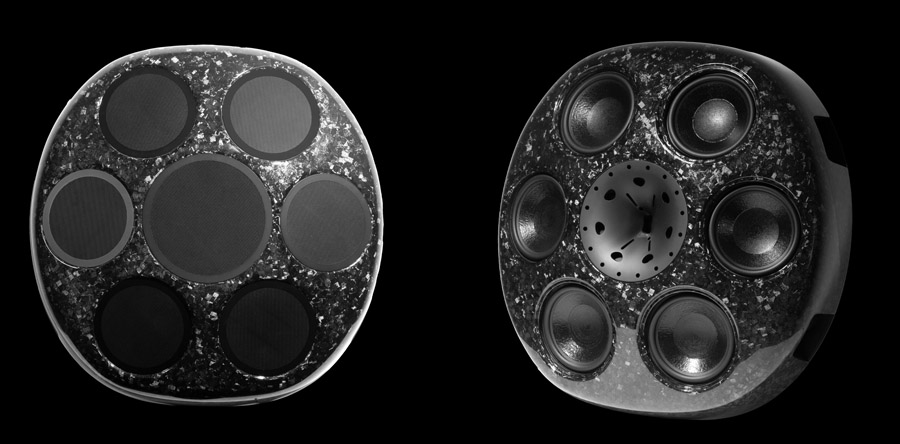
It was a shame these carbon fiber-finished beauties were hidden behind a screen, but after the demo, Chris from Seymour Screen Excellence retracted that screen to reveal the HALOs, which were handling left, center and right channels. Dialog was exceptionally clean and location and directionality of the sound was flawless. The speakers were equally adept at handling complex musical tracks as they were with bombastic action flicks loaded with gunshots and explosions.
The ASCENDO HALO speakers are suitable for virtually any sized home cinema as they can reach upwards of 136 dB SPLs (measured at 1 meter). During the demo, one clip featured a B17 bomber flying overhead and this almost had the audience running for cover.
The ASCENDO HALO 10 Pro Active EXT Cardioid speaker has a manufacturers suggested retail price of $60,000/each.
Read More: What Goes into a $1.3 million Home Theater? We Find Out at CEDIA Expo 2025
Best Audio Streamer: Bluesound PowerNode N331
In addition to Bluesound’s new Dolby Atmos-capable Pulse Cinema soundbar (mentioned earlier), the company had the latest version of their PowerNode on hand, the PowerNode N331 ($1,199). This is the company’s first powered streamer with an integrated center channel output.
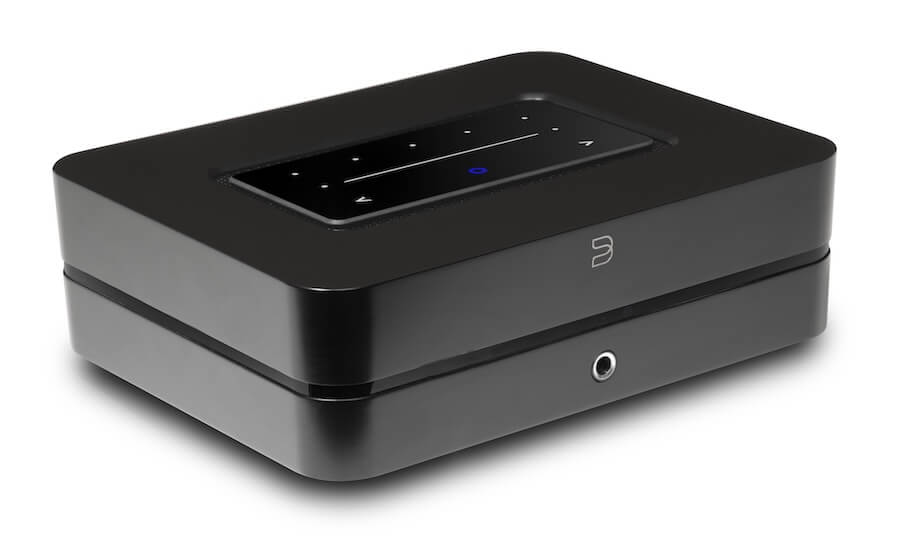
With the inclusion of an HDMI ARC/eARC port on recent streamers, more Bluesound customers have been connecting TVs to their Bluesound streamers and these customers have been asking for surround sound support. The N331 can power your front three speakers (front left, center and front right), and you can add a pair of powered Bluesound speakers or a second PowerNode to handle rear channel duties. This allows you to support Dolby Digital or virtualized Dolby Atmos with any speakers you choose.
For low frequency duties, you can either use the PowerNode’s line level subwoofer output and add a subwoofer of your choice, or pair the PowerNode N331 with Bluesound’s wireless Pulse Sub+ ($899).
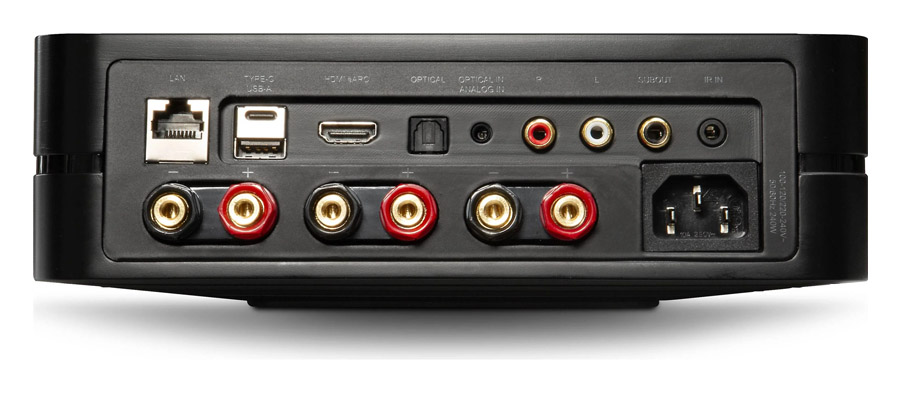
The company’s BlueSound Controller app supports all the major music streaming services and announced support for Qobuz Connect earlier this month.
More information: Bluesound’s New PowerNode Has One Feature Other Powered Streamers Lack
Best Amplifier: SPEAKERPOWER 8-Channel HTRx8-400
With no shortage of huge price tags at CEDIA Expo 2025, including $110,000 speakers and $400,000 projectors, it was refreshing to see some components priced squarely in the “affordable” realm. This was the case with the brand new HTRx8-400 power amplifier ($1,999) from SPEAKERPOWER.

The 8-channel Class D HTRx8-400 (200 WPC) amplifier can put out 200 watts per channel into 8 ohms or a whopping 400 watts per channel into 4 ohms. Use one to upgrade the amps on your favorite home theater receiver or pair it with a brand new preamp/processor to build out a new system.
A pair of the SPEAKERPOWER HTRx8-400 amps were used to power all 15 NextLevel Acoustics speakers in Sound Room 11, which got our pick for best home theater system under $200,000. Even at reference levels, we heard no harshness or distortion and the system’s dynamics were exceptionally clean. Kudos to SPEAKERPOWER for providing impressive power for such a low price.
Read More: Our Favorite Home Theater Systems at CEDIA Expo 2025
Best Audio Processing Tech: DIRAC Live ART (Active Room Treatment)
One of the biggest contributors to the sound of your speakers is the room itself. Even the best speakers in the world won’t sound great in a room with non-ideal acoustic properties. Passive room treatments can help but will only take you so far as they can’t always eliminate the negative interactions among the speakers themselves and not all rooms lend themselves well to physical room treatments (open doorways and windows can be particularly problematic).
DIRAC offers a comprehensive calibration and room correction solution called DIRAC Live ART (Active Room Treatment) which uses all of the speakers in the room, working together, to optimize the sound not just in one or two sweet spots, but everywhere in the listening room. DIRAC Live ART uses MIMO technology (Multiple-Input, Multiple-Output) to coordinate the correction among all speakers in real time.
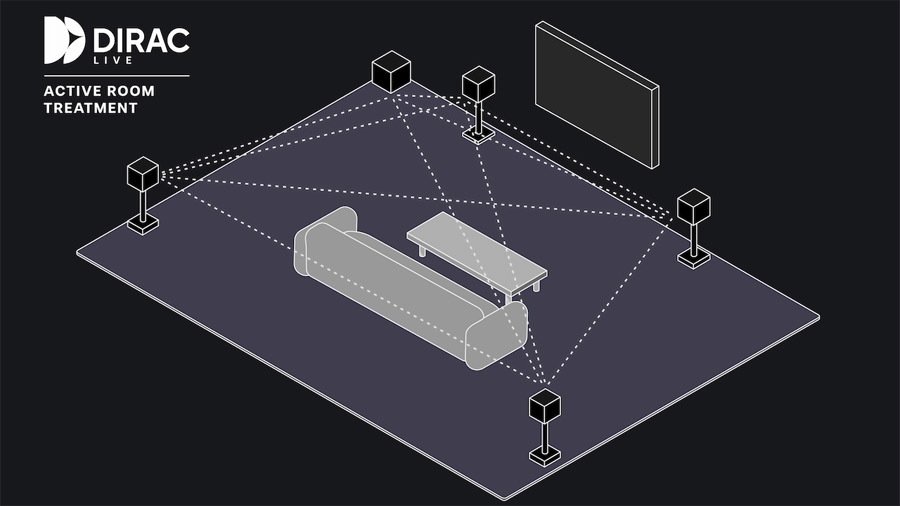
Until now, DIRAC Live ART has been exclusive to StormAudio, whose processors run in the tens of thousands of dollars. The results speak for themselves, as we heard in the $1.3 Million home theater system that won our “Best in Show” award. But not everyone with a penchant for high quality immersive surround sound has this kind of budget. Fortunately the cost of entry for DIRAC Live ART is about to drop.
At CEDIA Expo, Marantz showed off an early version of DIRAC Live ART in one of their consumer preamp/processors and said the tech will be coming to compatible Denon and Marantz receivers and processors by the end of this year.
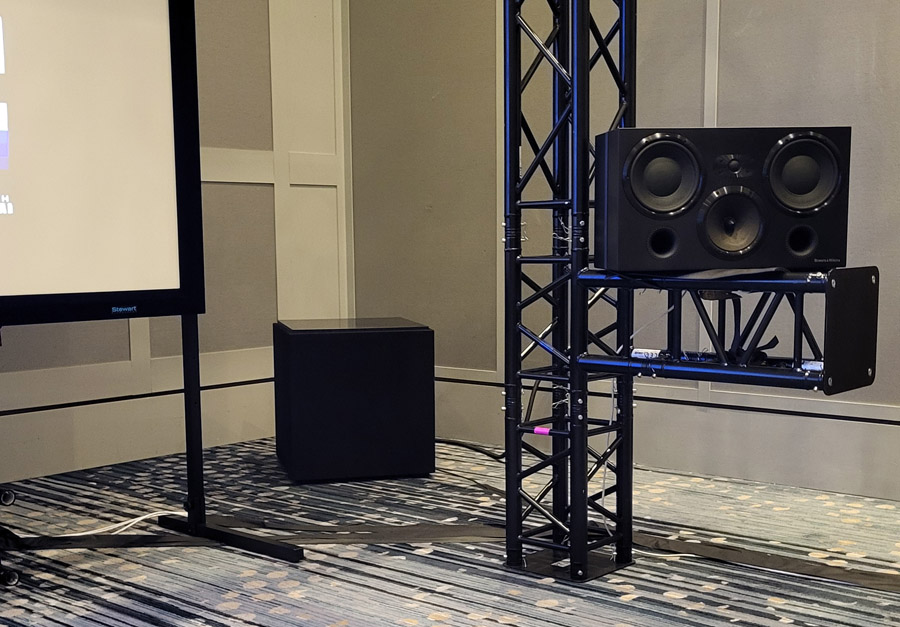
The company provided a demo of DIRAC Live ART (with A/B testing of the signal with and without correction) using pre-release software installed on a Marantz AV10 preamp/processor with two Marantz AMP10 amplifiers driving a 9.4.6 channel Bowers & Wilkins speaker system. The effect that DIRAC Live ART had on the overall sound was not subtle. Imaging locked in, bass became firmer and better defined without any mushiness or boominess. The sound became more realistic and immediate with subtle details that were hidden pre-correction becoming audible with correction applied.
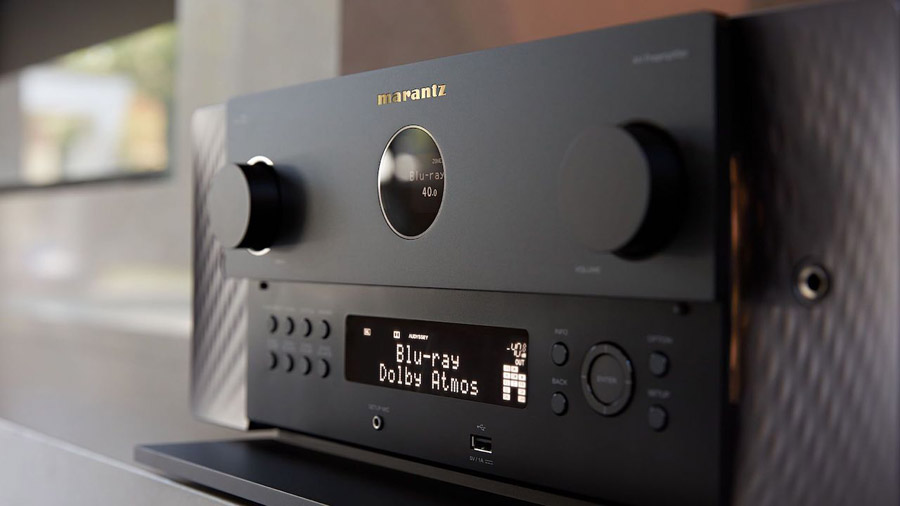
According to a Denon rep, any Denon or Marantz preamp/processor or receiver which has four independent subwoofer controls (like the Denon AVR-X3800H and above and the Marantz Cinema 50 and above) will be eligible for the upgrade. So you won’t even need to buy a new receiver to get this room correction goodness, as long as you already own a compatible model. It’s not free, though (nothing good in life is). Like other DIRAC upgrades, DIRAC Live ART will require a licensing fee. Pricing has not yet been announced.
Learn more about DIRAC Live ART.
The Bottom Line
This year’s CEDIA Expo show didn’t have as many revolutionary new product introductions as we have seen at some past shows. Manufacturers told us that the tariff uncertainties have caused them to delay many planned new products until the pricing situation is more stable and predictable. But even so, there was no shortage of cool speakers, amplifiers, processors, streamers and soundbars to see and hear at the show and the ones covered above were our favorites.
Congratulations to all of our eCoustics “Best in Show” winners and we’ll see you next year in Denver.
Related Reading:
- Best Home Theater Systems At CEDIA Expo 2025
- Best Video Gear at CEDIA Expo 2025
- What Goes Into A $1.3 Million Home Theater?
- Podcast: CEDIA Expo 2025 – Best In Show With John Sciacca
- More Stories from CEDIA Expo 2025


